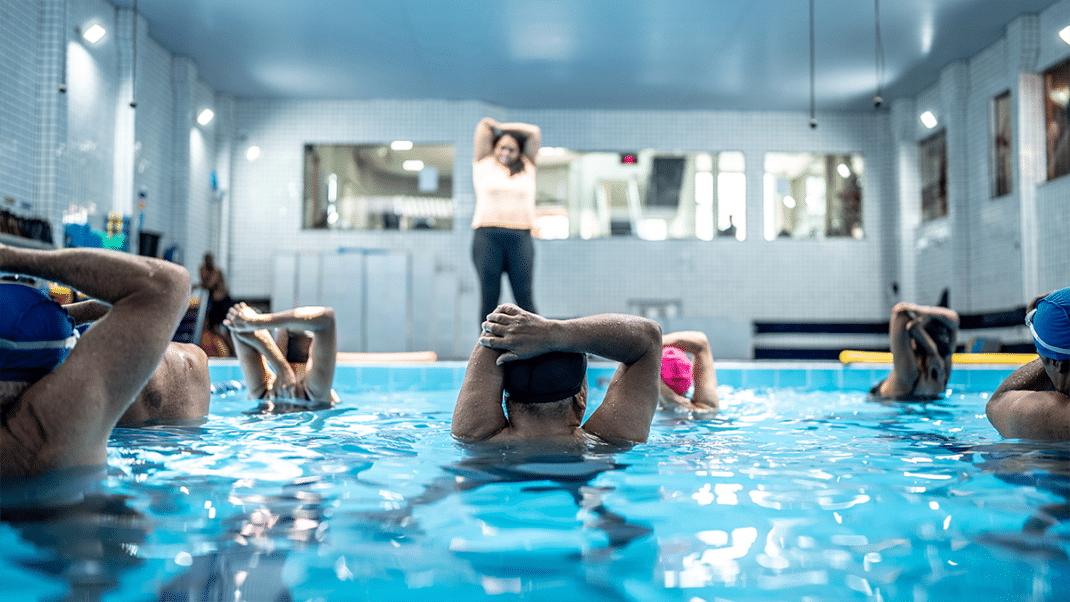Group Exercise Cues for Success
Group fitness instructors share their practices and tips for providing efficient cuing.
Questions about Group Exercise Cues
How do you craft and simplify group exercise cues so people understand them? What are your tips and best practices for efficient cuing?
From the Experts
Clarity and Encouragement
Ingrid Knight-Cohee, MSc, director of fitness classes at Fitness World, Vancouver, British Columbia
Participants want to know what to do and how to do it properly, but they also benefit from uplifting and encouraging words. For these reasons, cues are ideally both instructional and motivational. Here are a few tips and examples:
- Use a three-dimensional approach to cuing. The goals are to inform, or let them know what to do (name and speed of exercise or movement); how to perform it (safe and effective technique); and how it should feel (relate it to common activity or sport).
- Use a balance of technical and relatable language. It’s important to use correct anatomical and physiological terminology but also recognize that not everyone wants or needs to know each technical term. For example, the common squat can take an hour to dissect and explain, but I don’t have the time, and my participants don’t have the patience! I cue to take an athletic-ready stance (as if I’m about to chest-pass a basketball) and sit in an invisible chair. Right away, people know to engage the core and keep an “open chest” while hinging at the hips and knees.
- Use the show/tell/do technique simultaneously. In a class setting, you typically condense your cues and use a combination of verbal and visual, demonstrating a movement as you explain the technique and benefits. This is tricky and takes practice, but it’s efficient and keeps your class dynamic and flowing.
- Demonstrate how not to do an exercise. Staying with the squat example, I might say “watch your knee alignment” and [while letting them know what I’m doing] perform a squat poorly (e.g., exaggerating collapsed knees) so folks get a clearer understanding of optimal form.
- Avoid talking too much. Brief and concise group exercise cues are most effective. Being overly ornate with language can get annoying and create frustration or confusion.
- Keep it positive. Remember that all participants want to feel successful. Consistently provide motivational cues interwoven with instructional cues, keeping it light and fun. For example, a simple “Hey, you made it here today; the toughest part is over!” can go a long way. Likewise, following the technical cues of an exercise, I might add “now, most importantly, turn up the corners of your mouth,” resulting in a room full of sweaty smiles.
- Provide options. Your participants will have different abilities and fitness levels and will appreciate being given an exercise variation that works best for them. Offer options without judgment or criticism.
- Congratulate and celebrate: Working out is hard; working out consistently is even harder. Make your participants feel amazing by consistently recognizing their efforts and progress.
Ultimately, it’s not just what you say but how you say it that can make or break an exercise experience. Your goal as the instructor is to educate, inspire and facilitate and solidify healthy habits.
Being Clear and Direct with Your Group Exercise Cues

Keli Roberts, fitness educator and trainer, Oxnard, California; 2003 IDEA Fitness Instructor of the Year
Clear instruction boils down to these simple elements: editing, pausing, being directive and in the moment, and using proper grammar. For example, when you say “take it up” or “lift it and squeeze it,” what is “it”? Your arm? Your leg? Take it where? Instead, be precise: “Raise your right arm overhead, palm facing inwards, thumb back.” Another common mistake is to say “that leg,”or “that arm.” Whose leg? Whose arm? Make it personal: “your leg” or “your arm.” This is not only correct grammatically, but it personalizes your cues and helps people feel connected.
It never ceases to amaze me how redundant group exercise cues can be! What starts off as well-intentioned ends up being too wordy: “Now what we’re going to do is, we’re going to take it to the floor. Then we’re going to take our ball and place it behind our back. Then we’re going to lean into it, and we’re going to lengthen the spine and we’re going to strengthen the core.” It’s superfluous!
Learning to be directive and in the moment—and editing what you say—is essential to efficient cuing. Stay in the moment and say exactly what you want them to do. “Move to the mat to train your core. Sit down and take your ball and place it behind your lower back. Now lean back while lengthening your spine.”
Repetitive, meaningless words are another red flag. I had no idea [how often I used them] until my first solo step video. During editing, I noticed I kept saying, “That’s it!” I was mortified! I asked the sound person if he could remove them, and he said only the times the camera wasn’t on my face. He removed about 30!
We all use filler words, and using them is a devilishly hard habit to break. It starts with awareness and knowing what your “that’s it!” is. Filming yourself while teaching is a fantastic way to learn more about your specific speech habits. Once you find your filler words, pause, edit and either say nothing, or replace it with something more meaningful and less repetitive—something that connects with your participants.
Less Is More

Laura Aiello, global program manager for UFC GYM, Newport Beach, California
When it comes to cuing, less is more. It is critical that you boil cues down to just a few words. Choose words that are direct and leave out the “fluff.” For example, “feet hip-width apart” is far more impactful than “next we are going to set our feet a little wider, just under the hips.”
Set people up in a logical manner, which means cuing from the ground up in the order of each checkpoint. This gives people the best chance to be in alignment. Additionally, visual cues are helpful for determining direction, form and alignment.
Motivational cuing keeps people going. They need more than the occasional “woo-hoo!” They need to hear what they are doing right—be specific. A little “misery loves company” is okay, too—“My legs are on fire; how about yours?” Throw in some “You got this” verbiage, and you will be on your way to getting people through the tough stuff without giving up.
And most importantly, look people in the eye and smile!
See also: Streamline Your Yoga Cuing
Sarah Kolvas
Sarah Kolvas is the content manager for IDEA.




